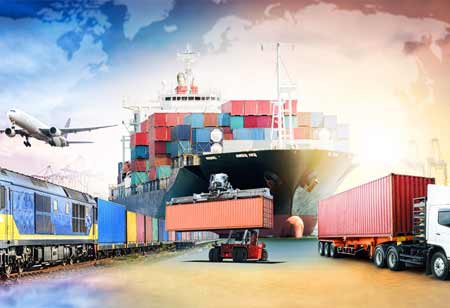THANK YOU FOR SUBSCRIBING
THANK YOU FOR SUBSCRIBING

By
Logistics Transportation Review | Friday, September 27, 2024
Stay ahead of the industry with exclusive feature stories on the top companies, expert insights and the latest news delivered straight to your inbox. Subscribe today.
Advanced technology, rigorous procedures, and well-trained personnel enhance cold chain logistics’ success, product integrity, consumer trust, and regulatory compliance.
Fremont, CA: Quality control in the cold chain, one of the many logistic requirements, requires minute attention to detail and has to be solved by advanced technological solutions. A temperature-controlled supply chain, in general terms, describes what is known as the cold chain; it is vital for preservation through the food, pharmaceuticals, and chemical sectors of perishable goods and temperature-sensitive products. Quality control in these sectors is more than mere best undertakings; it guarantees that the integrity of the product, which is safe for consumers, remains in good quality.
The cold chain begins at the point of origin, where temperature-sensitive goods are manufactured and must be kept at a specific temperature to reach the end user. Production, storage, transportation, and distribution occur in this line over many stages. At these stages, temperature control must be ensured to prevent spoiling, contamination, or degradation of the products.
It begins with the design and implementation of an excellent cold chain. Naturally, this requires some investment in refrigeration units for storage and transport that are serviced and calibrated regularly. Refrigerated warehouses and vehicles are outfitted with highly sophisticated temperature control systems that regulate and precisely monitor the temperature level. The slightest glitch in any equipment can cause temperature fluctuations that may not be tolerable to products.
Real-time cold chain monitoring ensures quality during transportation. Today’s cold chain logistics utilize Internet of Things (IoT) devices and sensors, which monitor temperature, humidity, etc., every minute. The modern system connects sensors to storage units and vehicles. They provide real-time data for specialists who can monitor it in real-time. The alert disrupts the conditions, enabling immediate corrective action to minimize product spoilage and maintain quality parameters in the supply chain.
Good handling practices also help to achieve quality control. People handling the chain are trained on the best ways to handle temperature-sensitive goods. Examples include the level of constant temperature, minimum exposure to ambient conditions, and the strict procedure used when loading and unloading them. These practices eradicate the exposure of goods to conditions that would degrade their quality.
Proper documentation and auditing also fall under the umbrella of quality control. Therefore, all these must be put on a complete record, including temperature logs, equipment maintenance, and anything that may go wrong or happen with the goods being transported and handled. Regular auditing and checking of the equipment and procedures are also vital to check for possible weaknesses and courses for improvement. Audits ensure conformity to industry standards and regulatory requirements while providing insights into continuous improvement.
It also extends to third-party logistics selection and management. Companies wishing to outsource third-party logistics into their cold chain require partners that observe high-quality standards and a history of reliability. Vetting these service providers for gaps and possibilities will ensure tighter control and predictability in the supply process.
I agree We use cookies on this website to enhance your user experience. By clicking any link on this page you are giving your consent for us to set cookies. More info





